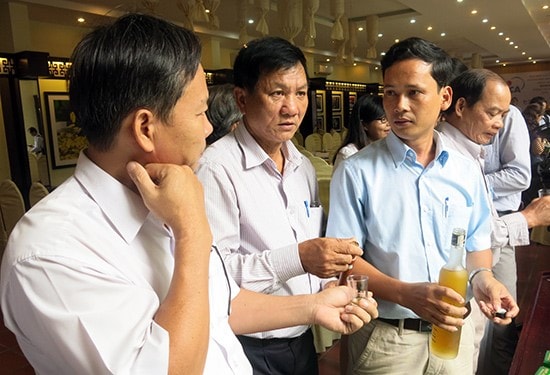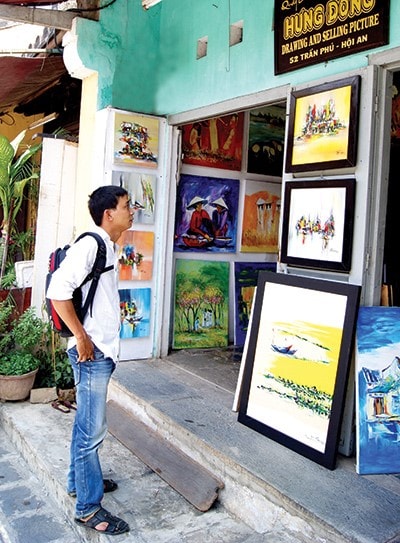(QNO) - In the seminar on sales channels development in cooperation with tourism - expanding safe vegetable farming and growing traditional handicrafts funded by JICA (Japan), the problem of selling products was once again mentioned.
 |
| The seminar participants talking about handicraft and fine art goods |
Looking for core values
According to Deputy Chairman of Quang Nam People’s Committee, Head of project management board Le Van Thanh, who presided over the seminar, the project of sales channels development in cooperation with tourism- expanding safe vegetable farming and growing traditional handicrafts had helped farmers and artisans have better lives. It was necessary to have more ideas for them to keep on developing their careers. So, the seminar was expected to find out the core values for goods selling.
Haruko Hamada’s theory identified themes or ideas as the core values of products. She also affirmed that new products had to be based on the combination of technology and traditional materials in order to prove its core values, and one more thing, products positioning plan (i.e. the position for selling goods).
 |
| A souvenir shop in Hội An ancient quarter. |
Takashi Omino contributed the ideas of shop decoration to the seminar. He supposed that a shop could be impressive and attractive to visitors or not, it partly depended on its design and the display of goods there.
Changing mindsets
Ms Hamada admitted the sophistication of Quang Nam’s handicrafts; however they were unable to be competitive in the markets. What a pity that Vietnamese sophisticated goods were not recognized among the cheap things from other countries because Vietnamese artisans and businessmen did not create brands and fame for their products. Moreover, it was difficult to find differences or typification of Vietnam’s goods that represents the Vietnamese cultural essence. All of the limitations of Vietnam’s products came from the artisans’ production habits that were difficult to change. So, Ms. Hamada suggested a plan to develop Quang Nam handicrafts that could respond to customers’ tastes, where there would be product brand names attached to traditional techniques and mind changes.
Head of JICA Vietnam Projects Fumio Kato said that Quang Nam’s handicrafts were attractive but big, cumbersome and difficult to be selected; so, changing product models was necessary to attract buyers. There would not be a perfect solution to the local goods except changing artisans’ and businessmen’s mindsets. Mr. Omino Tasaki, an expert spending 30 years studying sale arts, also shared his experiences with a hope of a little contribution to Quang Nam’s handicrafts sale solution.
By TRINH DUNG